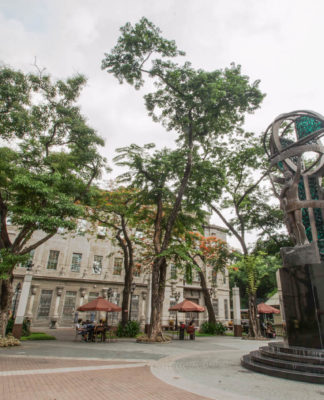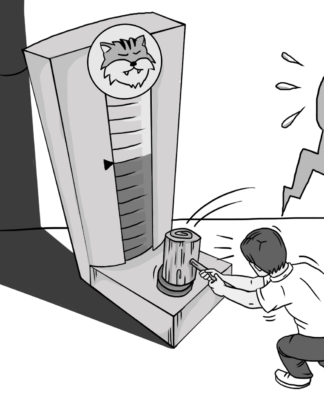UST’s vision to enhance its glory in the new millennium is slowly being realized through the creation of state-of-the-art classrooms.
Known as multimedia rooms, these classrooms are equipped with a set of personal computer housed in the teacher’s podium. Applications running on Microsoft Windows can be displayed through a projection screen hidden behind sliding whiteboards, using a remote-controlled compact LCD Projector placed on the ceiling. Two surround speakers at the back of the room and an amplifier complement a microphone connected to the speaker in the computer podium.Acetate presentations are also hassle-free with the slim, typewriter-sized projector on the teacher’s table. In some colleges like Engineering and Physical Therapy, for example, a 21-inch colored TV and a VHS are available for video support system during lectures and class discussions.
Last year these high tech facilities were initially constructed one per each of the 10 selected colleges. This year 20 more rooms in the university were converted through the Educational Technology Center (Ed-Tech).
Learning made easy
The project, according to Ed-Tech Director Fr. Melchor Saria, O.P., will initiate the integration of information technology in the university.
Ed-Tech offers free access to the Ed-Tech Internet Café or “Café 2011,” located on the second level of the Central Library. Faculty members can surf the Internet and use the computers for their Powerpoint presentations or web researches. The center also gives regular computer literacy programs to students and teachers to effectively use the multimedia classrooms.
At the same time, the University also plans to schedule videoconferences so that UST people can interact with international experts on various fields.
The innovative move seeks to improve UST’s research output by encouraging global linkages right inside the classroom. But Internet access is still on hold as the university upgrades its bandwidth.
2011 vision
Ed-tech’s budget comes from the P800 Student Information Development fee, which assures its maintenance and upgrading every year.
The University aims that by 2011, all classrooms will become multimedia. 20 new ones will be constructed annually to fully realize this until the quadricentennial.
Strict terms however, govern these facilities. Only students who paid for the fee will be given priority. Classes will only start after the professors have personally taken the keys from the Dean’s office. Prior to this, the teachers are expected to check all the equipment. An inventory follows after each class in the presence of the Supervisor of the janitorial services. The Ed-Tech will be responsible for the maintenance and repair of the classrooms.
An e-learning site is also being developed. This will provide on-line learning systems and distance learning programs where students and teachers may interact through e-mail, chat rooms, videophone and bulletin boards.
Thomasians can be certain that the administration is keeping up with the changing times by providing world-class facilities right in the classrooms. As the quality of instruction becomes technologically diversified, expectations are high that the quality of graduates will become more globally competitive.



















